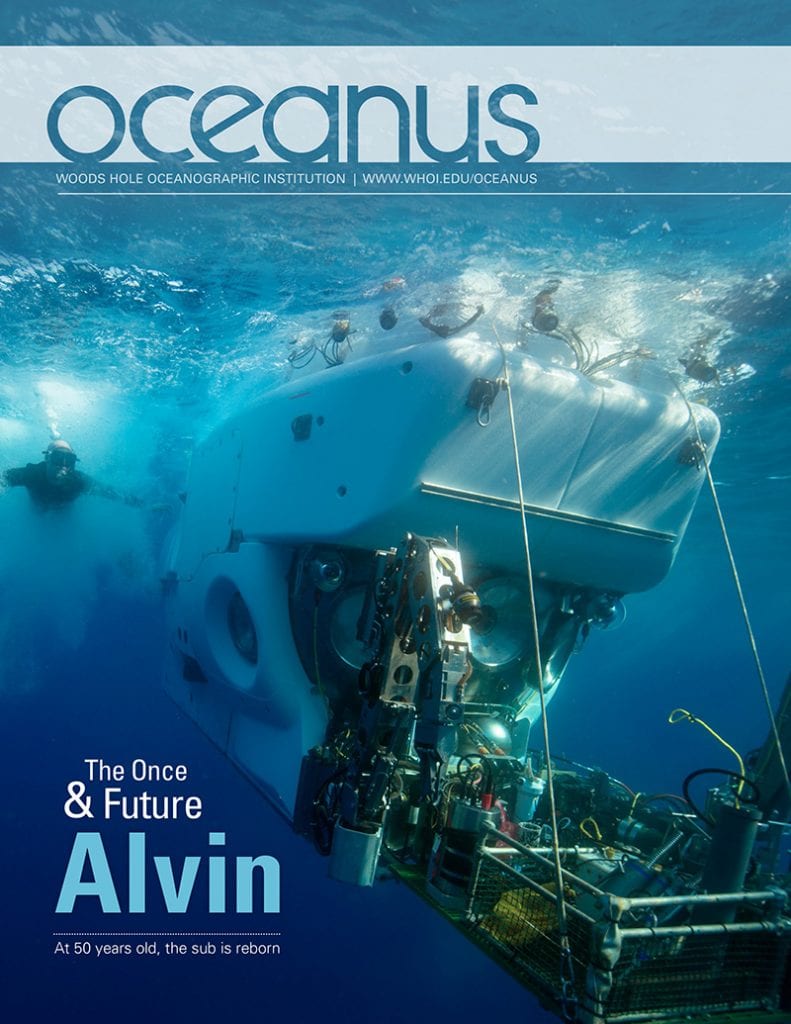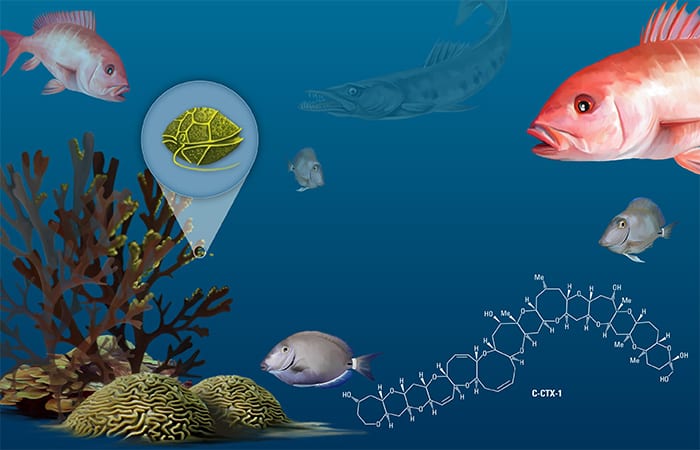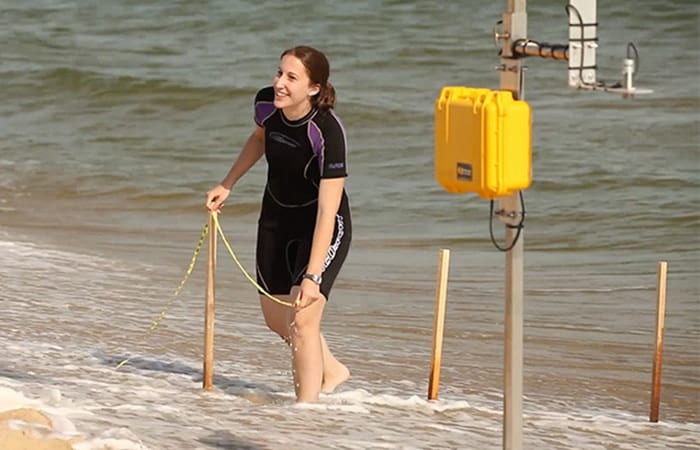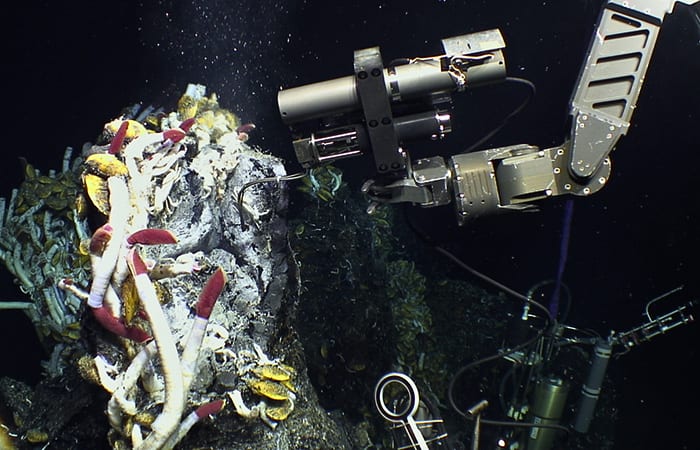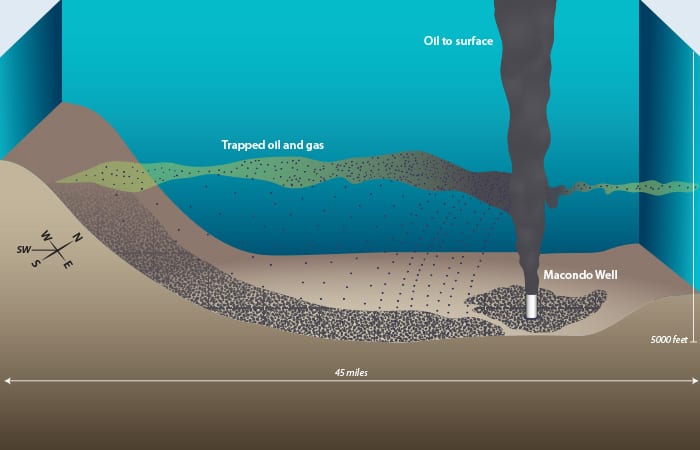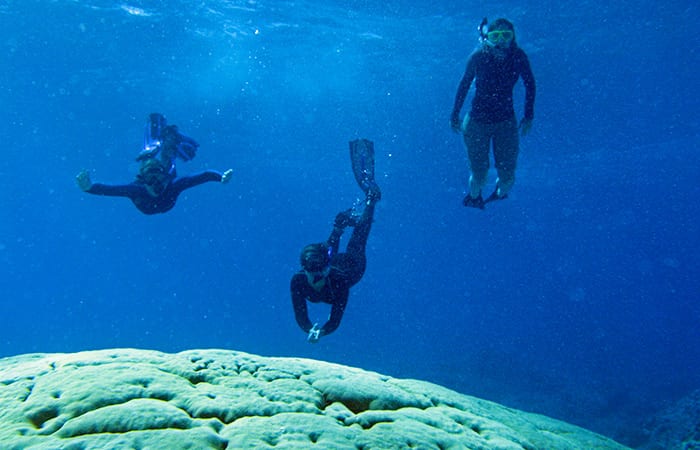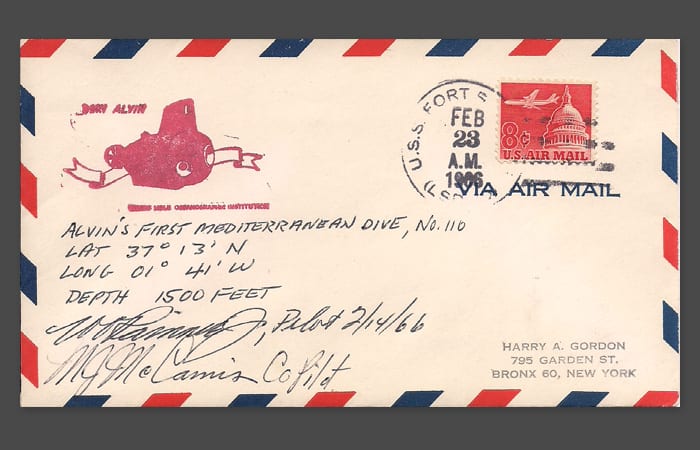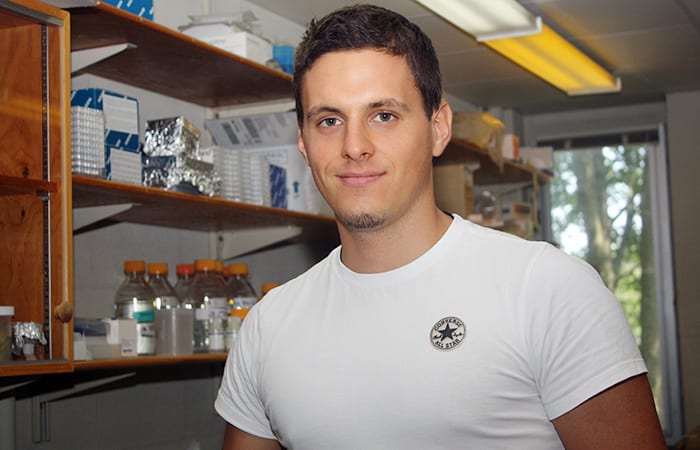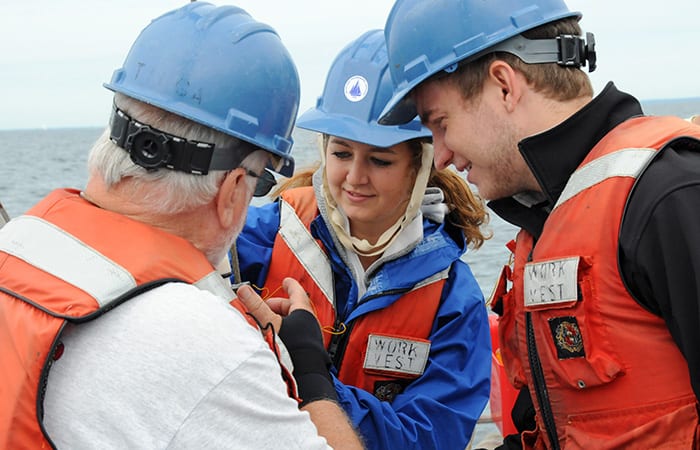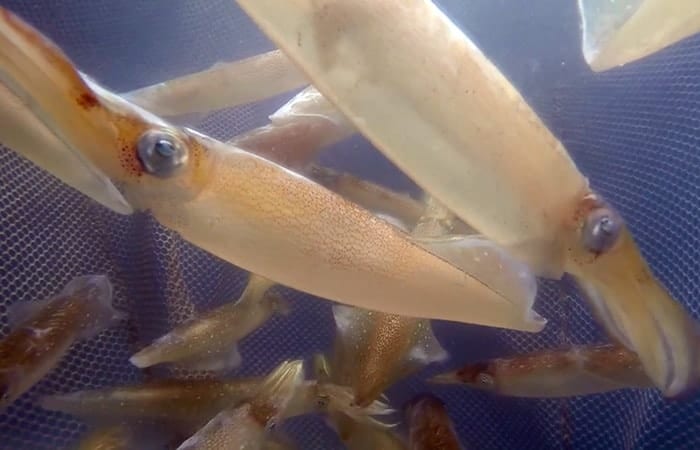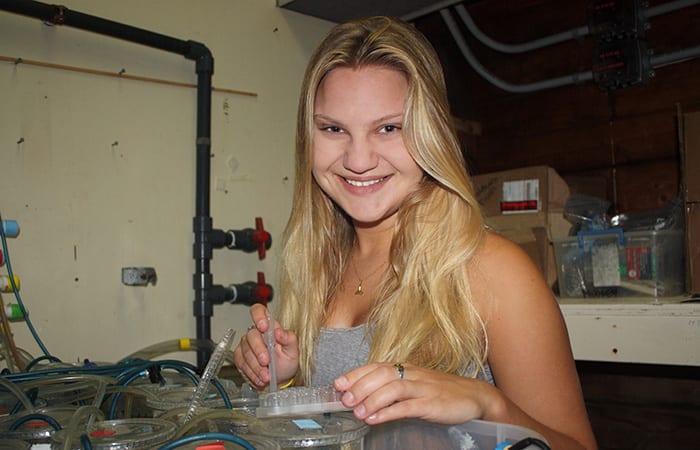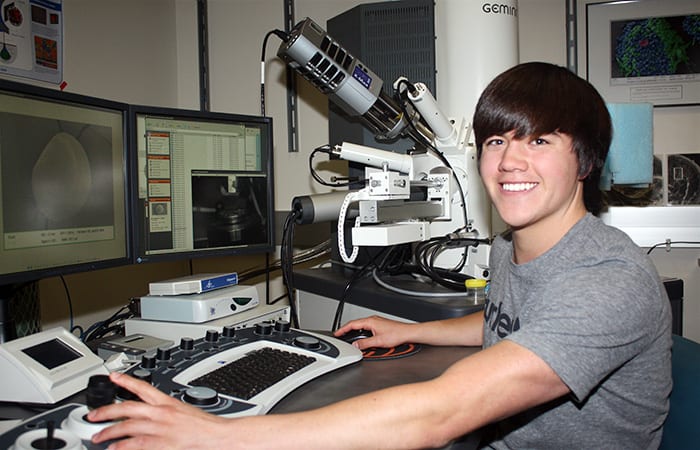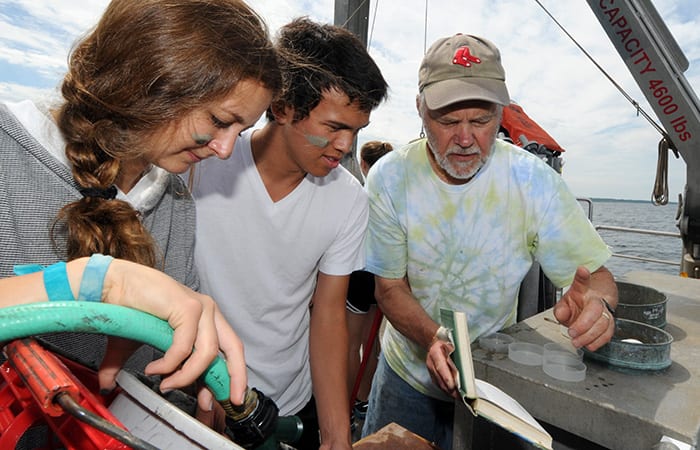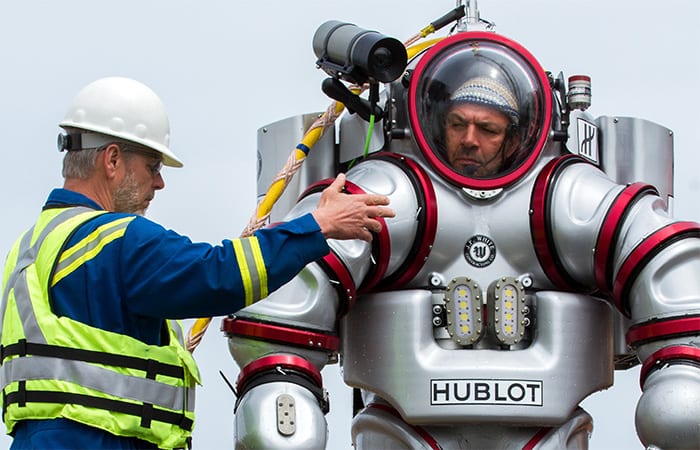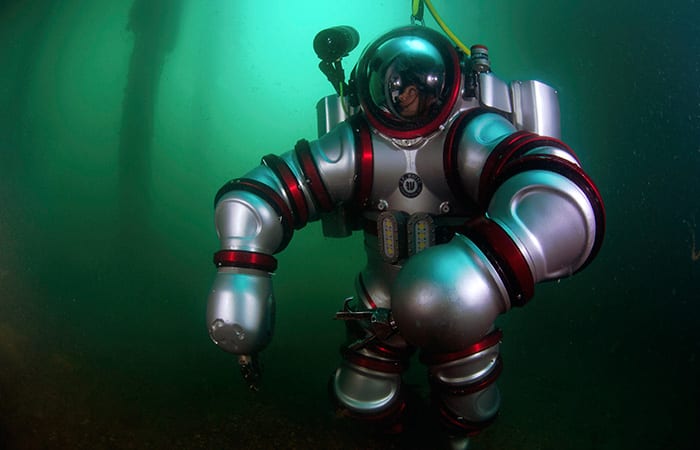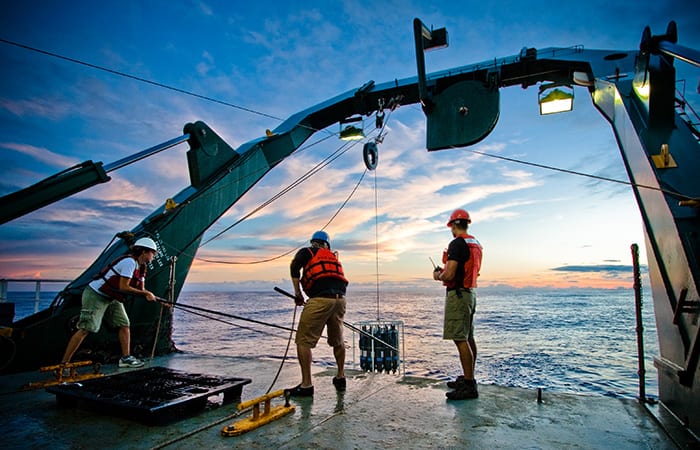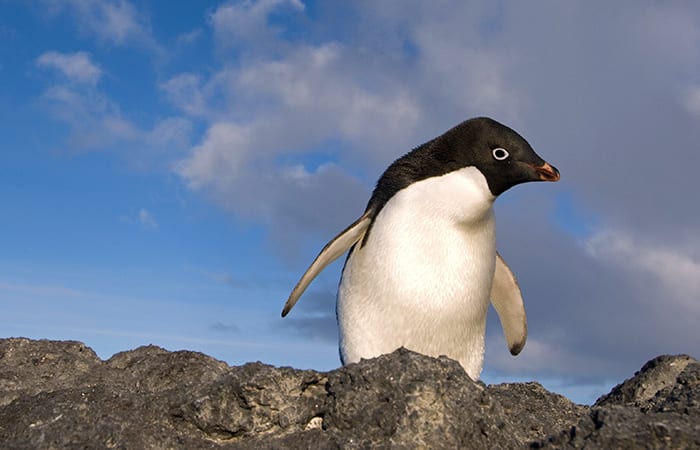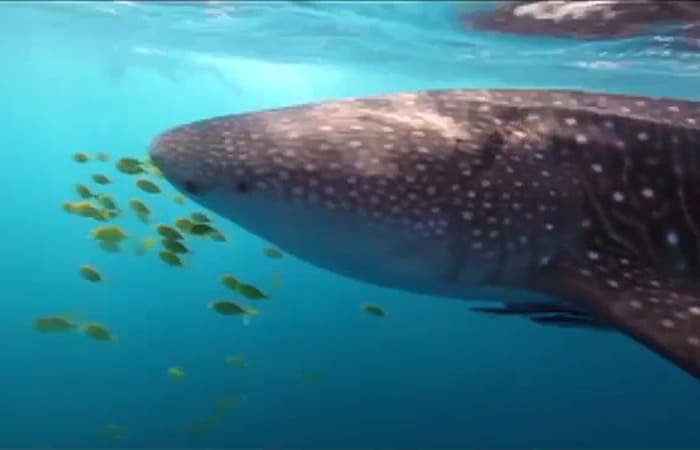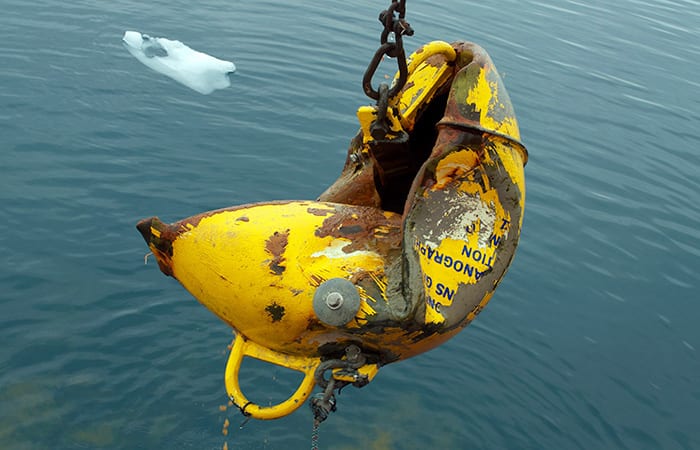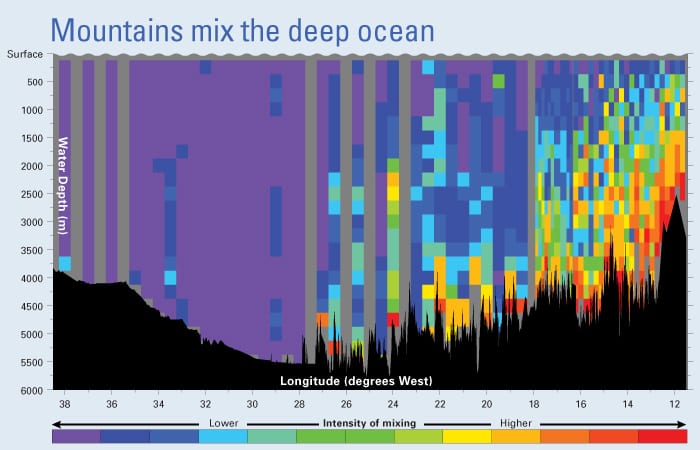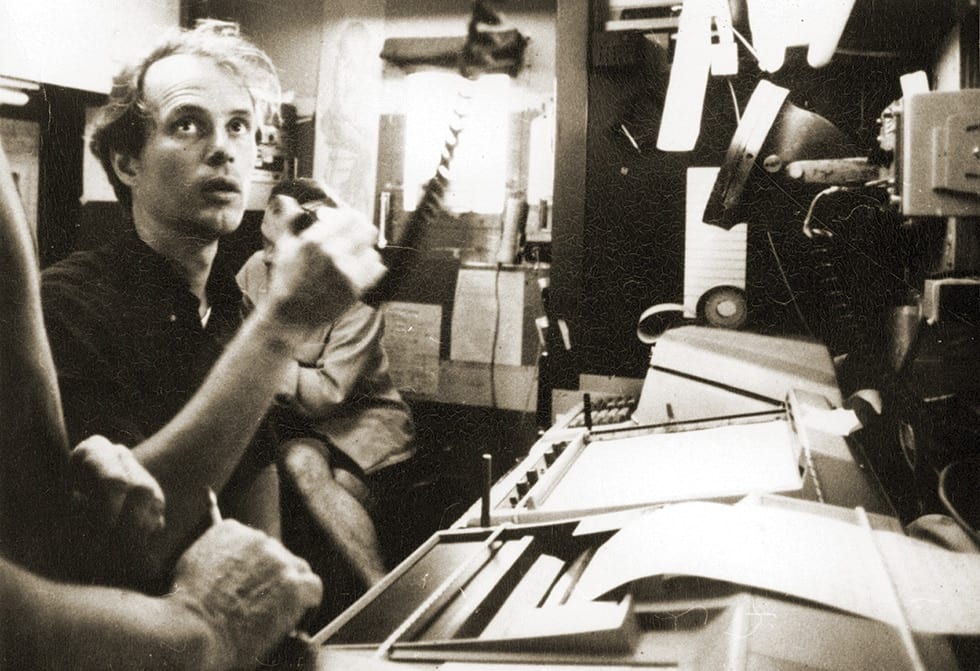Oceanus Online Archive
Trouble in the Tropics
An MIT-WHOI graduate student is on the trail of marine toxins that accumulate in fish and are eaten by people.
Read MoreFrom Lab to Sea
Scientists at Woods Hole Oceanographic Institution share their field-tested experience, training graduate students on methods and instruments to collect data in the coastal ocean.
Read MoreBig Questions About Tiny Bacteria
It’s 3 a.m., and Jesse McNichol is struggling to stay awake. Since midafternoon, he’s been in his lab, tending to a jumble of glassware, plastic tubing, and metal cylinders filled…
Read MoreWhere Did Deepwater Horizon Oil Go?
The Deepwater Horizon oil spill was unprecedented, and five years later, scientists are piecing together new insights into how the oil moved and behaved in the deep ocean.
Read MoreCoral-Current Connections
Will climate change shift a key ocean current in the Pacific? A graduate student is looking for clues recorded in coral skeletons.
Read More‘Covering’ Alvin‘s History
The Spellman Museum of Stamps and Postal History in Weston, Mass., is having an exhibit of postal covers and artifacts related to the submersible Alvin’s 50th anniversary Oct. 3 to Nov. 2.
Read MoreIt’s Hard to Kill a Killifish
Summer Student Fellow Lily Helfrich is using a new molecular tool, microRNA analysis, to explore why some killifish are able to thrive in waters heavily contaminated with PCBs.
Read MoreOn the Trail of an Invader
To find out when and how fast a small gray barnacle came to New England waters, WHOI researchers turn to forensic techniques.
Read MoreRecovering After a Hurricane
Summer Student Fellow Maya Becker studied how vulnerable four coastal communities were to major hurricanes—and how fast they recovered.
Read MoreA Summer of Science by the Sea, 2014 (Part II)
Every summer since 1959, undergraduates from around the world have come to Woods Hole Oceanographic Institution for a program to learn about ocean science and conduct research under the guidance of WHOI scientists. Read the second and final installment of our series of profiles of this year’s young scholars.
Read MoreIs Ocean Acidification Affecting Squid?
The rise in carbon dioxide in the ocean from fossil-fuel burning may have insidious impacts on marine life.
Read MoreSea Science in the Space Age
South Asian monsoons bring huge amounts of fresh water into the Bay of Bengal. Summer Student Fellow Mara Freilich used huge data sets from satellites to how and where the salinity of the Bay changes as a result.
Read MoreSwimming in Low-pH Seas
Researchers knew that squid raised in acidified water developed abnormal balance organs. To find out whether the young squid could still balance and swim normally, Summer Student Fellow Doriane Weiler mapped their movements.
Read MoreSurface Waters Go Their Own Way
Summer Student Fellow Sam Kastner found that at a given spot in the ocean, water at the surface may not be moving the same direction or speed as water deeper downâwhich can make predicting the path of nutrients or pollutants very challenging.
Read MoreScallops Under Stress
Like other marine species, scallops face multiple climate change-related problems. Summer Student Fellow Cailan Sugano studied how scallops respond to acidification and lack of foodâand whether extra food can help them resist damage due to more acidic seawater.
Read MoreA Summer of Science by the Sea, 2014 (Part I)
Every summer since 1959, undergraduates from around the world have come to Woods Hole Oceanographic Institution for a program to learn about ocean science and conduct research under the guidance of WHOI scientists.
Read MoreThe Exosuit Comes Aboard
One of the ocean’s least studied places is actually the realm between 200 and 500 feet deep. This zone has resisted exploration because it’s too deep for SCUBA and not…
Read MoreHigh-tech Dives on an Ancient Wreck
When sponge divers first chanced upon the shipwreck off the Greek isle of Antikythera in 1900, they couldn’t have known that it would become the richest ancient shipwreck ever discovered.…
Read MoreProteomics Reveals Ocean’s Inner Workings
In a new study, WHOI scientists have demonstrated how the emerging biomedical technique of measuring proteins—a field called proteomics—can be applied to the ocean to reveal the inner biochemical workings of microbial life and ocean ecosystems.
Read MoreFrom Penguins to Polar Bears
Polar ecosystems are especially vulnerable to climate change. They are also notably hard to study and to manage. Scientists came to WHOI recently for a Morss Colloquium to address the issues.
Read MoreA Haven for Whale Sharks
Scientists discovered an aggregation of juvenile whale sharks in the Red Sea and used satellite tags to track the elusive migrations of this endangered species.
Read MoreA Mooring in Iceberg Alley
WHOI scientists knowingly put a mooring in a fjord filled with icebergs near the terminus of a Greeland glacier. But it was their only way to learn if changing ocean conditions might be affecting how fast the glacier flowed into the ocean.
Read MoreA Drop in the Ocean
How can you follow a wisp of water within the turbulent immensity of the ocean? Jim Ledwell figured out a way. He developed a method to inject a harmless chemical…
Read MoreAlvin‘s Fun Facts
Here are answers to some of the questions people have asked about the deep-sea research submersible in its first half-century.
Read More
